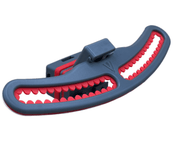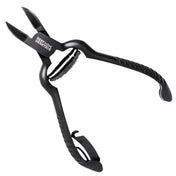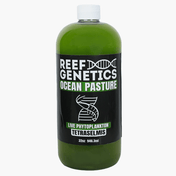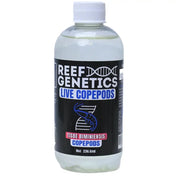Adding corals to your reef tank is one of the most exciting milestones in the hobby, but knowing when to add certain types is just as important as knowing which to choose. Some corals are far more forgiving than others, making them ideal for new tanks and new reef keepers, while others require rock‑solid water stability and advanced care to thrive.
Most corals in the hobby fall into three main groups:
-
Soft Corals: The most beginner‑friendly, tolerant of minor parameter swings, and a great way to bring early movement and color into your reef.
-
Large Polyp Stony (LPS) Corals: A step up in care, offering larger fleshy polyps, vibrant colors, and moderate lighting and flow needs.
-
Small Polyp Stony (SPS) Corals: The most demanding, requiring pristine water quality, stable parameters, and higher‑end equipment to keep them healthy.
Starting with Soft Corals, then moving into LPS, and eventually into SPS as your skills (and your tank’s stability) improve, is a proven path to long‑term reefing success.
In this guide, we’ll break down each coral type, explain their care requirements, and give you placement, lighting, and feeding tips so you can confidently grow your reef in the right order, from easy beginner corals to the most advanced showpieces.
What Are the Main Types of Coral?
Although there are hundreds of coral species available in the hobby, most fall into three main groups: Soft Corals, Large Polyp Stony (LPS) Corals, and Small Polyp Stony (SPS) Corals. These categories aren’t just for classification — they also hint at how challenging each coral will be to keep and when you should consider adding them to your tank.
-
Soft Corals are the most beginner‑friendly. They don’t have a hard skeleton, which makes them flexible and forgiving of small water parameter swings. They move beautifully in the current, grow quickly under the right conditions, and can handle a wider range of lighting and flow.
-
LPS Corals have a rigid calcium carbonate skeleton and large, fleshy polyps. They’re a step up in care compared to soft corals, often requiring a bit more stability in water parameters. Many are brightly colored and visually striking, and they tend to do best in moderate lighting and flow.
-
SPS Corals are the most demanding. They have very small polyps set into a rigid skeleton, grow in intricate branching or plating patterns, and show their best colors under intense light and strong, turbulent water flow. SPS corals require pristine water quality, stable parameters, and are generally best left until your tank is mature and you’ve built experience with other coral types.
Understanding these differences will help you build your reef in the right order — starting with soft corals, progressing to LPS, and finally adding SPS once your aquarium and skills are ready.
Soft Corals: The Best Starting Point
If you’re new to keeping corals, soft corals are where most reef keepers begin. They’re hardy, adaptable, and forgiving of the small mistakes that often happen in a new tank. Because they don’t have a rigid skeleton, soft corals sway gently in the current, adding natural movement and color to your reef from day one.
One of the biggest advantages of starting with soft corals is that they can handle the natural parameter swings that occur in a newly established aquarium. While they still appreciate stable conditions, they won’t react as severely to minor fluctuations in alkalinity, calcium, or nutrient levels compared to stony corals.
Care Requirements
-
Lighting: Low to moderate. Many thrive under standard reef lighting without the need for intense, high‑powered fixtures.
-
Flow: Gentle to moderate. Enough movement to keep debris from settling on their surfaces without blasting their tissue.
-
Feeding: Mostly photosynthetic through their symbiotic zooxanthellae, but some varieties will take small particulate foods when available. Feeding is optional for most soft corals.
Great Beginner Soft Corals
-
Zoanthids: Colorful, easy to frag, and available in endless varieties.
-
Green Star Polyps (GSP): Hardy and fast‑growing, but can spread quickly, so place them where you can control their growth.
-
Toadstool Leather Corals: Low‑maintenance and tolerant of a wide range of tank conditions.
-
Xenia: Known for their pulsing polyps and rapid growth, though they can take over if not managed.
Starting with these hardy species allows you to gain confidence in coral care while adding early life and color to your tank. Once you’ve kept them healthy for several months and your aquarium is running smoothly, you’ll be ready to explore more challenging corals.
Large Polyp Stony (LPS) Corals: The Next Step Up
Once your reef tank has been running smoothly for several months and you’ve had success with soft corals, Large Polyp Stony (LPS) corals are the natural next step. These corals combine the vibrant, fleshy movement of soft corals with the beauty of a rigid skeleton, offering some of the most eye‑catching pieces in the hobby.
LPS corals get their name from their large, fleshy polyps that extend from a hard calcium carbonate skeleton. This structure makes them a bit more sensitive than soft corals — they prefer stable water chemistry and can be affected by sudden changes in alkalinity, calcium, or magnesium levels.
Care Requirements
-
Lighting: Moderate. They don’t need the intense lighting that SPS corals require, but they still benefit from consistent PAR levels suited to their species.
-
Flow: Moderate to low, with a gentle indirect current. Too much direct flow can damage their fleshy tissue.
-
Feeding: Many LPS corals actively feed and will extend feeding tentacles when food is present. Target feeding with meaty foods like mysis shrimp or reef‑specific coral foods once or twice a week can promote growth and vibrant coloration.
Beginner‑Friendly LPS Corals
-
Hammer Coral (Euphyllia ancora): Large, hammer‑shaped tentacles that sway beautifully in the current.
-
Frogspawn Coral (Euphyllia divisa): Similar to hammer coral but with clustered, bubble‑like tips.
-
Torch Coral (Euphyllia glabrescens): Long, flowing tentacles with vibrant tips; needs a bit more space due to its stinging sweep.
-
Candy Cane Coral (Caulastrea furcata): Hardy, easy to frag, and available in bright greens, blues, and teals.
LPS corals offer a perfect blend of movement, color, and structure, making them a rewarding choice once your tank has matured beyond the soft coral stage. They also serve as a great learning step before tackling the most demanding corals in the hobby — SPS.
Small Polyp Stony (SPS) Corals: For Advanced Reef Keepers
Small Polyp Stony (SPS) corals are the crown jewel of many reef tanks — but they’re also the most challenging to keep successfully. Their beauty comes at the cost of strict care requirements, making them best suited for experienced reef keepers or tanks that have been running with stability for a year or more.
SPS corals have tiny polyps embedded in a hard calcium carbonate skeleton. Because of their structure, they rely heavily on water chemistry stability, strong lighting, and high water movement to thrive. Even small parameter swings can cause stress, tissue loss, or color fading.
Care Requirements
-
Lighting: High intensity, stable spectrum. Many SPS corals show their best colors under strong blue‑heavy reef lighting.
-
Flow: Strong, turbulent, and varied. SPS corals rely on high flow to deliver nutrients and remove waste.
-
Feeding: Primarily photosynthetic through their symbiotic zooxanthellae, but many benefit from supplemental feeding with fine particulate foods like reef roids, phytoplankton, or rotifers.
Popular SPS Corals
-
Acropora: Known for their branching structures and intense coloration, but very sensitive to parameter swings.
-
Montipora: More forgiving than Acropora but still requires strong light and stable water. Available in plating, encrusting, and branching varieties.
-
Birdsnest Coral (Seriatopora): Delicate, fast‑growing, and available in striking pink, purple, and green hues.
-
Stylophora: Compact growth form with vibrant colors; slightly more tolerant than some other SPS.
Why SPS Is the Last Step
While SPS corals are visually stunning, their demanding nature means they should be added only after your aquarium is well‑established and you’ve built confidence with easier coral types. The reward is worth it — in a mature reef, SPS can form breathtaking colonies with intricate shapes and vivid colors that transform your tank into a showpiece.
Lighting and Flow Placement
No matter what type of coral you choose, soft, LPS, or SPS getting their lighting and flow right is critical to keeping them healthy and growing. Each coral type has different needs, and understanding these before you place them in your tank will save you a lot of frustration.
Soft Corals
-
Lighting: Low to moderate. They do well in shaded or lower‑PAR areas of the tank, making them perfect for spots near the bottom or in areas not directly under the lights.
-
Flow: Gentle to moderate. Enough current to keep detritus from settling on their tissue but not so strong that it causes them to close up.
LPS Corals
-
Lighting: Moderate. Most LPS corals thrive midway up the rockwork, where light intensity is stronger than the bottom but not as intense as the top.
-
Flow: Moderate to low. They prefer indirect flow that keeps their tentacles gently moving. Too much direct flow can damage their fleshy tissue.
SPS Corals
-
Lighting: High. SPS corals do best in the upper portion of the tank, directly under strong reef lighting where PAR levels are consistent and intense.
-
Flow: Strong and turbulent. SPS require high, variable flow to help deliver nutrients and remove waste from their tissue.
Placement Tips
-
Start new corals lower than you think and gradually move them to their final location over a few weeks. This prevents light shock and gives them time to adjust.
-
Use your aquascape to create zones — low light/low flow areas for soft corals, mid‑range spots for LPS, and bright, high‑flow zones for SPS.
-
Keep aggressive corals with long sweepers, like torch or hammer corals, far enough from neighbors to avoid stinging.
By understanding these placement guidelines, you can create a balanced reef where every coral gets the environment it needs and you’ll avoid costly mistakes like bleaching, tissue damage, or coral warfare.
When to Start Adding Each Type of Coral
One of the most common mistakes new reef keepers make is trying to add challenging corals too soon. Even with the best intentions, your tank needs time to stabilize before it can support more demanding species. Adding corals in the right order will give you the highest chance of long‑term success.
1. Start with Soft Corals (First 3–6 Months)
Once your tank has finished cycling and you’ve established stable salinity, temperature, and basic nutrient levels, you can start with hardy soft corals.
-
These corals tolerate the small fluctuations common in newer tanks.
-
They’ll help you learn the basics of coral placement, lighting, and flow.
-
Examples: Zoanthids, Green Star Polyps, Toadstool Leather, Xenia.
2. Add LPS Corals (After 6+ Months)
By the six‑month mark, your tank should have greater stability, and you can introduce LPS corals.
-
LPS require more stable alkalinity, calcium, and magnesium levels than soft corals.
-
They tend to be more sensitive to parameter swings but reward you with bright colors and dynamic movement.
-
Examples: Hammer, Frogspawn, Torch, Candy Cane Coral.
3. Introduce SPS Corals (12+ Months)
Wait until your tank is at least a year old before adding SPS corals — especially the more sensitive Acropora species.
-
SPS corals require pristine water quality, strong lighting, and high, turbulent flow.
-
Even minor changes in parameters can cause stress, bleaching, or tissue loss.
-
Examples: Acropora, Montipora, Birdsnest, Stylophora.
Why This Order Works
Following this progression gives your tank time to mature biologically and your skills time to develop. Coral keeping is as much about learning your tank’s behavior as it is about the coral itself and starting with hardy species ensures your early reefing experiences are positive rather than frustrating.
Tips for Beginner Coral Keepers
Starting your first reef tank is exciting, but it’s easy to get overwhelmed by all the different coral types and care advice. These practical tips will help you avoid common pitfalls and set your corals up for long‑term success.
1. Focus on Stability, Not Perfection
Corals thrive in stable conditions — even if they’re not “perfect” by the book. Sudden changes in temperature, salinity, or chemistry stress corals far more than slightly imperfect but consistent parameters.
2. Test Your Water Regularly
For beginners, testing weekly helps you spot trends before they become problems. At a minimum, check salinity, alkalinity, calcium, magnesium, nitrate, and phosphate.
3. Acclimate Slowly
When adding new corals, take time to acclimate them to your tank’s lighting and flow. Start in lower‑light, lower‑flow areas and gradually move them to their final position over a couple of weeks.
4. Feed Appropriately
Not all corals need supplemental feeding, but LPS and some soft corals benefit from occasional target feeding. Overfeeding can lead to algae issues, so feed in moderation.
5. Manage Aggressive Corals
Some corals have long sweeper tentacles or chemical defenses that can harm neighbors. Give them space or use rock barriers to prevent coral warfare.
6. Keep a Coral Log
Document your coral additions, placement, lighting settings, and feeding routine. This will help you troubleshoot issues later and repeat what works.
7. Go Slow
Adding too many corals at once can overwhelm your system’s ability to handle increased biological demand. Introduce a few at a time and let your tank adjust.
By starting slowly, keeping parameters stable, and paying attention to each coral’s needs, you’ll develop the instincts that make experienced reef keepers successful.
Conclusion: Building Your Reef the Right Way
Every thriving reef aquarium starts with a plan, and when it comes to corals, patience is your greatest tool. By beginning with hardy soft corals, moving to vibrant LPS corals, and eventually taking on the challenge of SPS corals, you’re setting yourself, and your tank, up for lasting success.
This gradual approach not only allows your aquarium to stabilize, but it also gives you time to learn your corals’ needs and develop the skills to keep them healthy. Rushing the process often leads to stress for both the aquarist and the corals, while a measured, step‑by‑step approach rewards you with a reef that grows more beautiful and complex over time.
Remember: reef keeping isn’t a race. It’s a journey. Every coral you add, every new polyp that grows, is a sign that your dedication is paying off. With stable water, proper placement, and a thoughtful stocking plan, your reef can become a living masterpiece, one that reflects your patience, knowledge, and care.
So take it slow, enjoy the process, and watch as your tank transforms from a few hardy soft corals into a stunning, diverse reef ecosystem you can be proud of.




















